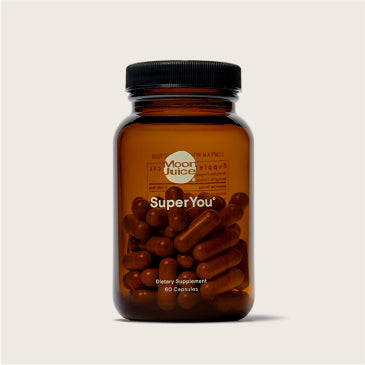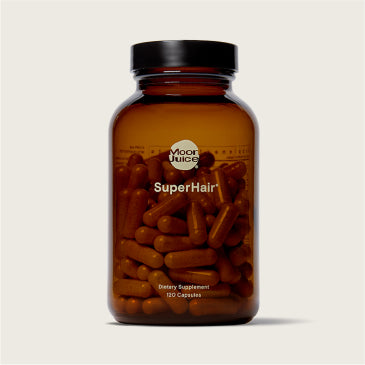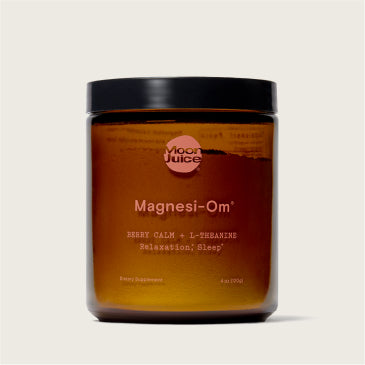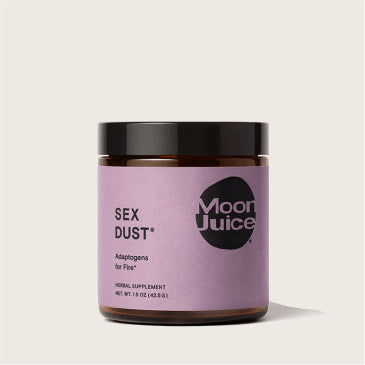Since washing your face is the first step in any skin care routine — from the bare bones to a more advanced regimen — you’ll want to choose the best cleanser for your skin concerns and goals. A good cleanse will give your complexion the fresh, clean slate it needs to complement any products that follow. Yet with so many different facial cleansers to choose from, it can be challenging to know which one is right for you.
In this ultimate guide to facial cleansers, you’ll discover what makes each type unique and which ones may be best for you. Wondering how to use a facial cleanser because yes, there is a proper way. From questions like do I wash my face with cold water too how to massage the cleanser into your skin, we've got you covered. Plus: this blog features helpful FYIs on ingredients to prioritize and avoid in a cleanser and tips to to narrow down your search.
What Are the Types of Facial Cleansers?
While there are countless types of cleansers to choose from — and more formulations and innovations hitting the market at breakneck speed — these are some of the most common facial cleansers you’ll come across.
(Note: Some cleansers will fit multiple categories. For instance, a cleanser can be creamy yet generate foam, while another can be a gel formula with exfoliating properties.)
1. Gel Cleansers
Best for: oily skin, acne-prone skin
Gel cleansers are clear and have a slick, gel-like consistency. A gel cleanser offers deep cleansing and helps to remove excess sebum and impurities, they’re typically ideal for people with oily and/or acne-prone skin — and even more so when they pack chemical exfoliants. Normal skin types can also benefit from using gel cleansers, yet it can be a matter of personal preference.
2. Cream Cleansers
Best for: dry skin, sensitive skin, mature skin
Most cream cleansers are rich and nourishing, which makes them a great choice for people who have dry skin or sensitive skin. Since skin composition and health change over time, the lush consistency of cream cleansers can be great for mature skin. With age, people experience a reduction in elasticity, more fragility, and increased dryness. A gentle cream cleanser with calming, moisture-enhancing ingredients can support a healthy, balanced skin barrier and keep dryness at bay.
3. Foaming Cleansers
Best for: oily skin, combination skin
Most foam cleansers originate in a different form — such as a liquid, gel, or cream — and transform into foam after pumping it from a dispenser or upon application. A foam cleanser is suitable for oily skin and combination in particular because they tend to provide the strongest surface-level cleanse amongst all types of facial cleansers. However, a squeaky clean (read: tight) skin feeling is far from ideal.
The unfortunate truth is that many foam cleansers contain harsh surfactants called sulfates. These are foaming agents you’ll find in everything from laundry detergents and dish soaps to shampoos.
Many foam cleansers contain sodium lauryl sulfate (SLS), which was originally created as an industrial wartime degreaser.
In other words, it’s one of the ingredients to avoid in skin care when it comes to supporting a healthy, balanced complexion.
Studies show that these abrasive agents strip away skin components during cleansing and stay in the stratum corneum (outermost layer of the epidermis) even after rinsing them off. In short, sulfates can compromise the integrity of the skin barrier and lead to skin barrier damage. A weakened skin barrier can allow toxins and bad bacteria to wreak havoc on your complexion, leading to adverse side effects such as:
- Dryness
- Breakouts
- Redness
- Inflammation
Note: While many conventional foam cleansers contain harsh sulfates and alkaline ingredients — which most people will want to steer clear of — not all do. (We’ll soon cover some worthy alternatives for gentle, non-irritating, barrier-friendly foaming ingredients and formulations.)
4. Clay Cleansers
Best for: oily skin, acne-prone skin, combination skin
Clay cleansers will employ different types of clay — or a combination thereof — such as bentonite clay, red clay, kaolin clay (aka white clay). They can be a good stand-in for a harsh foaming cleansers, as they’re suitable for similar skin types. Clay cleansers are effective in absorbing excess sebum and drawing impurities from the skin, so they’re a worthy option for people with oily skin and acne-prone skin. Some (though not all) clays used in skin care also offer antibacterial properties. They’re also effective for combination skin, which is oily in places like the T-zone and drier in areas like the cheeks.
5. Oil Cleansers
Best for: all skin types
Oil cleansers are unique in that you apply them to dry (rather than wet or damp) skin. This application allows the oil cleanser to bind to sebum, debris, and other types of residue — including sunscreen and makeup, both of which often linger on the skin’s surface when using other types of facial cleansers. While it may seem counterintuitive for people with oily skin to apply more oil to their face, like attracts like, meaning oil cleansers cling to excess oil and get rinsed off. At the same time, since they don’t include harsh surfactants, most oil cleansers are gentle enough to use even on dry skin and sensitive skin.
All said, oil cleansers are effective to remove impurities and yield a balanced complexion without:
- Exacerbating sebum production
- Causing excess dryness
- Irritating the skin
These benefits aside, it will ultimately depend on which oils are used in a given formula to ensure that it’s right for your skin type. For instance, jojoba oil is biomimetic (meaning it resembles skin’s natural sebum) and boasts anti-acne and antifungal properties, which makes it compatible for people with skin prone to breakouts. On the other hand, some natural oils are comedogenic (aka pore-clogging), which makes them less suitable for oily and acne-prone skin but more nourishing and beneficial for dry skin.
In addition, oil cleansers are most suitable for use as the first step in a double cleansing routine. Most experts advise against using just an oil cleanser, and not everyone will be interested in investing in two separate cleaners — not to mention adding an extra step in their skin care regimen. (If you can relate, stay tuned to discover a multitasking cleanser that’s suitable for all different skin types while removing makeup and leftover product, supporting hydration, and balancing the skin’s pH levels.)
6. Cleansing Balms
Best for: all skin types
Cleansing balms don’t vary too much from oil cleansers. The biggest difference between these two types of facial cleansers is that the former is solid and the latter is liquid.
Both:
- Should be applied to dry skin
- Are effective to remove hard-to-remove impurities
- Are generally beneficial for all skin types, from oily to dry (depending on the formulation)
- Are more suitable as the first cleanser in a double cleansing regimen
7. Exfoliating Cleansers
Best for: oily skin, acne-prone skin, combination skin, normal skin
There are two types of exfoliating cleansers: physical and chemical. Physical exfoliating cleansers use small particles — like microbeads, walnut shells, or microcrystals — to resurface the skin and remove dead skin cells. Sometimes, they can be too aggravating and run the risk of creating micro-tears, thus potentially damaging the skin barrier. They’re typically not the safest option for your skin.
Chemical exfoliants, on the other hand, can get the same job done while minimizing the risk of irritation and sensitivity. Yet this will ultimately depend on factors such as:
- Your skin type and tolerance level
- How gentle (or harsh) the chemical exfoliants are
- How often you use the exfoliating cleanser
- What other actives you use in your skin care routine
With these points in mind, exfoliation can pretty much benefit all skin types. The trick is finding the right product and cadence. Moreover, the best exfoliating products won’t be limited to cleansers. You may find that you love a creamy cleanser and prefer to follow up with a powerful liquid exfoliant with AHAs and BHAs to help encourage cellular turnover, stimulate collagen production, and prevent clogged pores.
8. Micellar Cleansers
Best for: sensitive skin
Micellar cleansers are staples in French skin care. (Micelles are microscopic oil molecules in water that help remove impurities.) They tend to be very gentle, which makes them a compelling option for reactive and red skin. Studies show that micellar cleansers are safe and effective for people with sensitive skin types, and can yield visible improvements in unpleasant skin sensations in as little as two days. Micellar cleansers can also come in handy for people who live in areas with hard water. While micellar water is safe to use for all skin types, those with oily and acne-prone skin especially are bound to find that other types of facial cleansers provide a more thorough cleanse.
9. Cleansing Bars
Best for: normal skin, oily skin
You can think of cleansing bars as an updated, face-focused version of traditional bar soap. The main benefits of cleansing bars is that they’re eco-friendly given their minimal packaging. They’re also easy to pack if you’re traveling. However, depending on the formulation at hand, they may be too drying for some skin types. You’ll also need to be mindful of how hygienic the bar is while using it — i.e., ensuring it’s stored in a clean vessel and not exposed to dirt and bacteria in your bathroom.
Sign Up, Nerd Out
Get wellness tips, education, and recipes
delivered straight to your inbox.
Get wellness tips, education,
and recipes delivered
straight to your inbox.
Tips for Choosing the Right Facial Cleanser for You
Now that you have a better idea of the different types of facial cleansers on offer, it’s time to figure out which one is best for you and your skin’s needs. Since many of the cleansers on this list are suitable across a range of skin types, here are a few tips to help narrow down your selections:
- Experiment with different cleansers. Sometimes the quest to find the best cleanser will come through trial and error, as well as personal preference. If you can’t think of cleanser formulations you’ve enjoyed in the past, get clear on your main skin concerns and take things from there given the insights shared above.
- Consider the rest of your routine. Again, if you prefer to save exfoliating as a separate step in your regimen, you can cross exfoliating cleansers off your list of potential buys. And if you know you won’t use an oil cleanser or cleansing balm followed by another cleanser, you can nix these two from consideration as well.
- Rely on a multitasking cleanser that’s suitable for all skin types. Want to take the guesswork out of what might or might not work? An ideal cleanser for everyone will cleanse, soothe, and nourish your skin without throwing its natural pH levels off balance. You can also simplify things and potentially even whittle down your skin care regimen by choosing a two-in-one cleanser and treatment that works well for all skin types.
On this last point, a creamy cleanser that packs safe alternatives to harsh foaming agents — as well as nourishing botanical ingredients — can come to the rescue. Milk Cleanse is a sulfate-free, pH-balanced gentle milk face wash that complements all skin and can easily pair well with other products in your routine.
The key ingredients in this friendly facial cleanser include:
- Coconut Ferment — a sudsy, non-stripping alternative to SLS that helps protect the skin barrier; helps minimize transepidermal water loss (TEWL); and removes sweat, SPF, and makeup (including mascara)
- Silver Ear Mushroom — a traditionally used staple in TCM that can hold up to 500 times its weight in water for a surge of hydration and plumping effects
- Adaptogenic Reishi — a traditionally used staple in TCM that helps protect skin against stressors and supports healthy barrier function
Milk Cleanse is safe enough to use as a double cleanser as well as twice daily. Depending on your skin’s needs, you may choose to limit your cleansing to once daily at night to give your barrier a break.
Sources

-(1).png?v=1682397977193)
.png?v=1682397989014)










